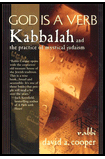
HOW TO WORK WITH PAIN OF DYING THROUGH MEDITATION
Most physicians these days will prescribe sufficient medication to deal with any pain involved in the dying process. Everyone has different pain tolerances and ultimately only the patient can determine her or his own comfort level.
Once appropriate medication has been arranged, there are a number of complementary ways to work with pain. One of them is meditation.
Guided meditation is often invaluable for people who have not had meditation experience. The secret of being a competent guide is to learn how to participate in the meditation while directing. Never simply read the words. This will not work. You must enter into the spirit of the meditation. Your own state of mind will influence your timing, voice modulation, sensitivity to the needs of the others and management of the content of the imagery. The following are examples of guided meditations that can be of particular help to some in the dying process.
1. Inspiration:
One of the basic meditative techniques is to read inspirational scripture out loud. Psalms, the Song of Songs, the Shema, other prayers, and any other parts of scripture can have insightful meaning when read slowly and used as contemplative material.
Many people have strong negative feelings about biblical literature. This is often related to the language rather than the subject. Try to work with material that is as close to everyday language as possible. If a meaningful scriptural reading cannot be found, use poetry or something beautiful from another culture that touches your soul.
If using inspirational readings, be sure to review the selection before beginning to make certain it is appropriate. Do not read for content, but for inspiration. One line followed by a full minute or two of silence is fitting. The idea is not to "get somewhere," but to inspire the silence. This process has great value.
2a. Speaking to God:
For ten or fifteen minutes, the people in the room speak to God in their own words. Each should try to find a space alone in order to speak in a whisper and have a certain degree of privacy. Try any of the following subjects (or any others that seem appropriate):
a. What I did right in my life.
b. What I might have done better.
c. What I need right now.
d. My prayer for others.
e. How to deal with my pain and anxiety.
f. How to open my heart and accept things.
2b. Reflection of God:
Repeat this process (2a) of praying to God, but this time speak to each other as if your partner were the vehicle through which God is listening. One speaks, one listens. After five or ten minutes, partners should switch. Pray to one another, and let your heart connect intimately with your partner's.
3. Singing Together:
Sing or chant together some holy songs, names of God, lines from liturgy, wordless melodies, or anything else that helps you raise your voices in song. Singing together has great healing power.
4. Nature:
If you can go for a walk, be in nature, sit by the ocean, on a mountain, in the desert, by a stream, anywhere different and alive, try to do so. Just sit quietly and listen. (If the dying person is unable to do this, it is still highly recommended for the caretaker.)
5. Meditations:
Other meditations on this website are useful in working with the fear of pain are: equanimity, the archangel meditation, and the guardian angel meditation.
FEAR OF THE UNKNOWN
Hasidic and kabbalistic literature, the Talmud and the Zohar all have descriptions of realms of reality that transcend the mind. As these other realms are not rational and are difficult to describe, one of the best ways to enter the experience of dwelling in these realms is through guided visualization which allows the meditator total latitude in forming up his or her own internal images. When we utilize our imagination in the context of guided meditation to explore these other realms, the effect can be to gently alleviate fears of the unknown. Indeed, when we enter heavenly realms in our imagination, we often feel comforted within. It is as if our souls have memories far beyond the limits of our minds. Guided meditations are very useful in this process.
When working with people express great fear of dying, I often lead them through a series of guided meditations. We travel together on a creative inner journey to realities we imagine it could be like after death. The imaginative mind has marvelous access to other realms of reality. The point is not whether or not we are making things up. Rather, as pointed out earlier, in the conception that "as above, so below," the Kabbalists believe that if we can imagine it, some aspect of it "exists." Thus, we use this to explore the other side of death.
Guided visualizations are not supposed to suggest concrete forms. Rather, the idea is to set intentions and to encourage the person experiencing the visualizations to explore with great freedom the images of their own minds. The guide is merely a facilitator when the person needs help to break through her or his own self-imposed limitations. Once this is accomplished, a whole new inner world opens up for the person who is visualizing. This can be accomplished in one extended session of a couple of hours, or in a number of sessions over the period of a week. It is usually a rich experience and often leads to a different perspective of life after death.
Yet, with all this, fear of dying is a major obstacle for many people. As we will see, the greatest sages in Judaism often reached out for help to deal with the fear of death. They generally agreed that dying itself was a far easier experience than dealing with the process of dying in which fear plays a dominant role. There are no simple answers to this challenge.